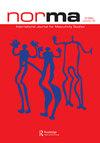Changing men, changing masculinities
IF 2.1
Q2 SOCIOLOGY
引用次数: 0
Abstract
When it comes to academic literature, a cursory survey of titles reveals that one constant in discussions of men and masculinities is change. Segal’s (1993) Slow Motion: Changing Men, Changing Masculinities was already raising the issue of change in relation to men and masculinities over thirty years ago. Interest in the subject, however has intensified since the early 2000s, with hooks’ (2004) The Will to Change: Men, Masculinity and Love, Hidaka’s (2010) Salaryman Masculinity: Continuity and Change in Hegemonic Masculinity in Japan, Seidler’s (2006) Transforming Masculinities, Roberts’ (2013) Young Working-Class Men in Transition as well as his (2015) edited Debating Modern Masculinities: Change, Continuity, Crisis?, Anderson’s (2009) Inclusive Masculinity: The Changing Nature of Masculinities, and, recently, Luyt and Starck’s (2022) Masculine Power and Gender Equality: Masculinities as Change Agents to name just a few. Even before this organisations such as Achilles Heel in the UK (see Seidler, 1991) and the women’s liberation movement (see, for instance, Hanisch, 1969) were foregrounding the issue as important. Articles in recent issues of NORMA, too, have focused on the question of ‘newer’ forms of masculinity as well as central questions around what change is desirable and possible (Christofidou, 2021; Roberts, Elliott, & Ralph, 2021; Wolfman, Hearn, & Yeadon-Lee, 2021). The number of articles which deal with the issue of changes in the performance and charactertisation of masculinity and the position and performances of men, are innumerably larger (see, for example, Duncanson, 2015; Ratele, 2014; Ratele, 2015; Segal, 1993) and expanding this out to even those which do not include change in the title, the corpus of literature becomes unmanageable. There are essentially three aspects to this debate, revolving around theoretical, ethical and empirical considerations. The first concerns theories around if and why men change. CSMM, via Connell, has been indebted to a specific idea of hegemony, rooted in Gramscian notions of culture as something which is flexible and related to, but to a certain extent independent of, economic forces. Whilst Marx was notoriously economist in his approach to culture, Gramsci’s (1971) revisions emphasised the independence of the so-called superstructure from the base, observing that culture could shape political influence and subsequently economic power rather than simply the reverse. For Connell, the promise of hegemony for theorising change was one of the key dynamics which hegemony offered over sex role theory which failed to grapple with the question (Demetriou, 2001, p. 339). Connell notes specifically that “I stress that hegemonic masculinity embodies ‘a currently accepted strategy’. When conditions for the defence of patriarchy change, the bases of dominance of a particular masculinity are eroded...Hegemony then, is a historically mobile relation” (Connell, 1995, 77 emphasis added). Alongside these more structural approaches were, of course, poststructuralist critiques of gender and identity, more broadly, as malleable and fluid, which emphasised notions of gender as in flux, contextually variable and as changing over time (e.g. Beasley, 2008; Butler, 1997, 2008; Halberstam, 1998; West & Zimmerman, 1987). This suggested that change itself, is the de facto state of gender and societies more generally. There is also the question of where change emanates from and which men are perceived to have changed. Elliott (2020) and Roberts (2015) argue that change is almost always presumed to改变男人,改变男子气概
说到学术文献,对标题的粗略调查显示,关于男性和男子气概的讨论中有一个不变的主题是变化。西格尔(1993)的《慢动作:改变男人,改变男子气概》在三十多年前就已经提出了与男人和男子气概有关的变化问题。然而,自21世纪初以来,人们对这一主题的兴趣有所增强,包括胡克斯(2004年)的《改变的意志:男人、男子气概和爱情》、Hidaka(2010年)的《工薪族男子气概:日本霸权男子气概的延续和变化》、塞德勒(2006年)的《转变中的男子气概》、罗伯茨(2013年)的《转型中的年轻工人阶级男性》,以及他(2015年)编辑的《辩论现代男子气概:变化、连续性、危机?》安德森(2009)的《包容性男子气概:男子气概的变化本质》,以及最近的Luyt和Starck(2022)的《男性权力和性别平等:作为变革推动者的男子气概》等等。甚至在此之前,英国的“阿喀琉斯之踵”(见Seidler, 1991)和妇女解放运动(见Hanisch,例如,1969)等组织就把这个问题列为重要议题。《NORMA》最近几期的文章也关注了“新”形式的男性气质问题,以及围绕什么样的变化是可取的和可能的核心问题(Christofidou, 2021;Roberts, Elliott, & Ralph, 2021;Wolfman, Hearn, & Yeadon-Lee, 2021)。处理男性气质的表现和特征以及男性的地位和表现变化问题的文章数量要大得多(例如,见Duncanson, 2015;Ratele, 2014;Ratele, 2015;Segal, 1993),并将其扩展到甚至不包括标题变化的那些,文学语料库变得难以管理。这场辩论基本上有三个方面,围绕着理论、伦理和经验考虑。第一个是关于男人是否会改变以及为什么会改变的理论。通过康奈尔,CSMM得益于一种特定的霸权思想,这种霸权思想根植于葛兰西的文化观念,即文化是灵活的,与经济力量相关,但在一定程度上独立于经济力量。虽然马克思在文化研究方面是出了名的经济学家,但葛兰西(1971)的修正强调了所谓的上层建筑与基础的独立性,观察到文化可以塑造政治影响,进而塑造经济力量,而不是简单地相反。对于康奈尔来说,霸权对理论化变革的承诺是霸权提供的关键动力之一,而性别角色理论未能解决这个问题(Demetriou, 2001, p. 339)。康奈尔特别指出:“我强调,霸道的男性气概体现了‘一种目前被接受的策略’。当捍卫父权制的条件发生变化时,特定男子气概的统治基础就会受到侵蚀……因此,霸权是一种历史上流动的关系”(Connell, 1995,77)。当然,除了这些更具结构性的方法之外,后结构主义对性别和身份的批评,更广泛地说,是可塑的和流动的,强调性别的概念是不断变化的,在背景下是可变的,并且随着时间而变化(例如Beasley, 2008;Butler, 1997,2008;直到,1998;West & Zimmerman, 1987)。这表明,变化本身,是性别和社会更普遍的事实状态。还有一个问题是,变化从何而来,哪些人被认为发生了变化。埃利奥特(2020)和罗伯茨(2015)认为,变化几乎总是被假定为
本文章由计算机程序翻译,如有差异,请以英文原文为准。
求助全文
约1分钟内获得全文
求助全文
来源期刊

NORMA
Social Sciences-Gender Studies
CiteScore
3.00
自引率
14.30%
发文量
23
期刊介绍:
NORMA is an international journal for high quality research concerning masculinity in its many forms. This is an interdisciplinary journal concerning questions about the body, about social and textual practices, and about men and masculinities in social structures. We aim to advance theory and methods in this field. We hope to present new themes for critical studies of men and masculinities, and develop new approaches to ''intersections'' with race, sexuality, class and coloniality. We are eager to have conversations about the role of men and boys, and the place of masculinities, in achieving gender equality and social equality. The journal was begun in the Nordic region; we now strongly invite scholarly work from all parts of the world, as well as research about transnational relations and spaces. All submitted manuscripts are subject to initial appraisal by the Editors, and, if found suitable for further consideration, to peer review by independent, anonymous expert referees. All peer review is double blind and submission is online via Editorial Manager.
 求助内容:
求助内容: 应助结果提醒方式:
应助结果提醒方式:


